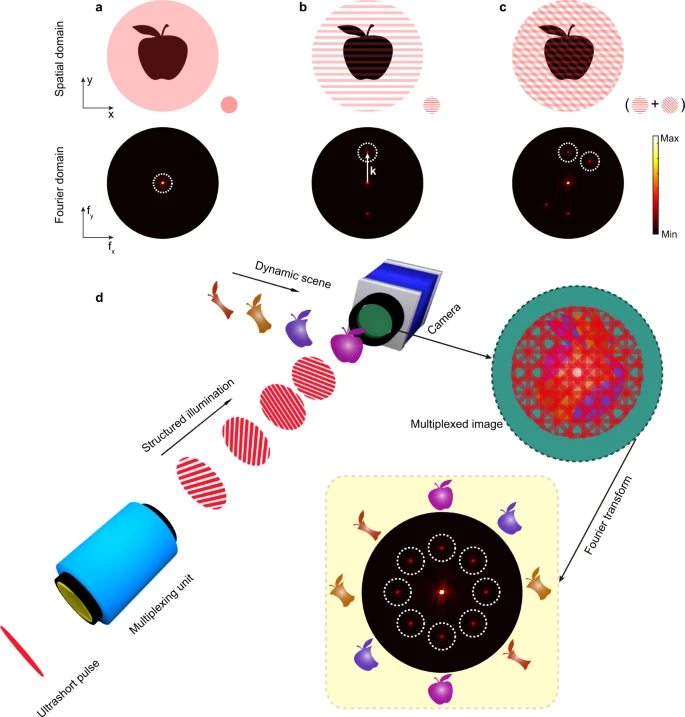Phys.org May 26, 2023
Real-time imaging modalities with ultrahigh temporal resolutions are required for capturing ultrashort events on picosecond timescales for unveiling many fundamental mechanisms in physics, chemistry, and biology. Current single-shot ultrafast imaging schemes operate only at conventional optical wavelengths, being suitable solely within an optically transparent framework. Researchers in Canada
leveraged the unique penetration capability of terahertz radiation to demonstrate a single-shot ultrafast terahertz photography system that could capture multiple frames of a complex ultrafast scene in non-transparent media with sub-picosecond temporal resolution. By multiplexing an optical probe beam in both the time and spatial-frequency domains, they encoded the terahertz-captured three-dimensional dynamics into distinct spatial-frequency regions of a superimposed optical image, which was then computationally decoded and reconstructed. According to the researchers their approach opens the investigation of non-repeatable or destructive events that occur in optically opaque scenarios… read more. Open Access TECHNICAL ARTICLE

Concept of probe-beam multiplexing in the spatial-frequency and time domains. Credit: Nature Communications volume 14, Article number: 1704 (2023)